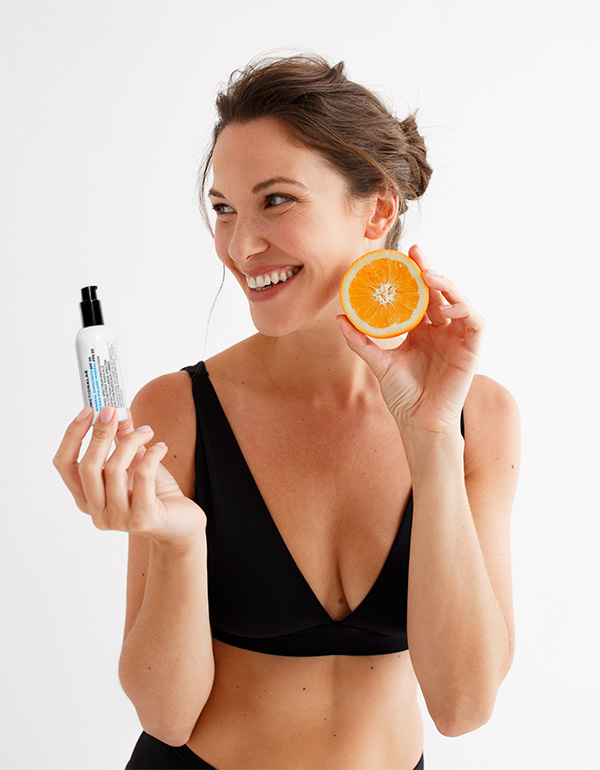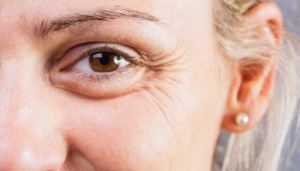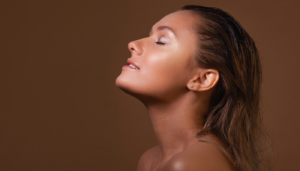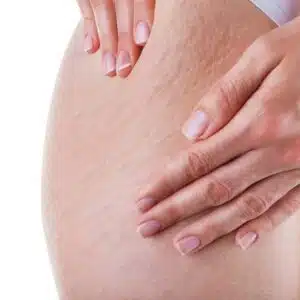Traditional aesthetic treatments have long been effective at restoring volume, smoothing wrinkles, and enhancing skin appearance, but regenerative aesthetics takes skin rejuvenation even further. By working at a cellular level, these treatments help the skin repair, rebuild, and maintain its youthful structure for longer-lasting results.
Rather than targeting the visible signs of aging, regenerative treatments like biostimulator injectables, PRP, exosomes, and fractional lasers stimulate collagen production, enhance cellular communication, and improve overall skin quality over time. These innovative approaches can be used alone or in combination with traditional treatments to achieve natural, progressive, and long-term skin improvements.
How Does Regenerative Aesthetics Work?
Regenerative aesthetics focuses on activating the body’s natural repair mechanisms to improve skin structure, elasticity, and overall health. Instead of providing instant volume or temporary corrections, these treatments work at a biological level, encouraging the skin to restore itself over time.
At the core of this approach are fibroblasts, the cells responsible for producing collagen and elastin, which give the skin its strength and flexibility. As we age, fibroblast activity slows down, leading to thinner, less resilient skin. Regenerative treatments reactivate these cells, promoting the renewal of healthy, youthful skin from within.
Key Regenerative Aesthetic Treatments
Regenerative aesthetics encompasses a range of advanced treatments designed to stimulate collagen, enhance cellular repair, and restore skin vitality over time.
Biostimulator Injectables: Collagen Renewal from Within

Unlike traditional fillers that provide immediate volume, biostimulator injectables focus on stimulating the skin’s natural collagen production for gradual, long-lasting rejuvenation. These injectables activate fibroblasts, encouraging them to rebuild lost collagen and elastin, which are essential for maintaining firmness, elasticity, and density. Over time, the skin becomes stronger, smoother, and more resilient, with results that continue to improve for months.
Biostimulators can be categorized based on their mechanism of action and formulation:
- Calcium Hydroxylapatite (Radiesse): This injectable provides an immediate lifting effect while stimulating collagen and elastin synthesis over time. It helps improve skin firmness and structure, making it ideal for areas with volume loss and skin laxity.
- Poly-L-Lactic Acid (Sculptra): Instead of providing instant volume, Sculptra works gradually by reactivating fibroblasts, leading to a progressive thickening of the skin. It is particularly effective for restoring density in aging or thinning skin.
- Hyaluronic Acid-Based Biostimulators (Profhilo, Skinvive): While traditional HA fillers focus on hydration and volume, HA-based biostimulators are designed to enhance skin quality, elasticity, and collagen production without adding significant volume. These injectables improve skin hydration, radiance, and firmness across the face, neck, and hands.
Because these treatments stimulate collagen production gradually, results develop progressively over several weeks to months. Depending on the product used, the number of sessions, and individual skin response, effects can last from 12 to 24 months. This makes biostimulators an excellent choice for both preventative and corrective skin rejuvenation, helping to improve firmness, elasticity, and overall skin quality over time. While they reinforce the skin’s structural support, they are not a replacement for surgical lifting procedures, but they can contribute to a firmer, healthier, and more youthful-looking complexion in the long run.
Growth Factor Therapy: PRP & Exosomes for Cellular Regeneration

Growth factor therapy is a key pillar of regenerative aesthetics, helping to enhance cellular communication, accelerate tissue repair, and stimulate collagen production. Two of the most advanced options in this category are Platelet-Rich Plasma (PRP) and exosome therapy, both of which work by activating the skin’s natural repair mechanisms to improve overall skin health.
PRP (Platelet-Rich Plasma): Harnessing the Power of Your Own Blood
PRP is obtained by drawing a small amount of the patient’s blood and processing it through centrifugation to isolate platelets and plasma rich in growth factors. These growth factors—such as PDGF (Platelet-Derived Growth Factor), TGF-β (Transforming Growth Factor Beta), and VEGF (Vascular Endothelial Growth Factor)—stimulate fibroblast activity, boost collagen and elastin production, and support wound healing.
Exosome Therapy: Next-Generation Cellular Regeneration
Exosomes are extracellular vesicles naturally released by stem cells, acting as messengers that optimize cell function. Unlike PRP, which directly supplies growth factors, exosomes deliver instructions to skin cells, helping them to repair, regenerate, and produce collagen more efficiently.
Advanced Techniques to Stimulate Collagen and Rejuvenate the Skin

Fractional laser and microneedling are two highly effective collagen-stimulating treatments that work by creating controlled micro-injuries in the skin. This process activates fibroblasts, triggering the production of new collagen and elastin, which helps restore skin firmness, refine texture, and reduce visible signs of aging.
Fractional Laser: Deep Resurfacing for Intensive Skin Renewal
Fractional lasers, including CO₂ laser, deliver precise energy into the skin, creating microthermal zones that stimulate deep collagen remodeling while preserving surrounding tissue for faster healing. These lasers are particularly effective for:
- Wrinkles and fine lines, as new collagen formation helps smooth and firm the skin.
- Acne scars and texture irregularities, by promoting tissue regeneration.
- Skin laxity, improving elasticity and firmness over time.
- Hyperpigmentation and sun damage, by encouraging skin renewal.
Microneedling: Precision Collagen Induction Therapy
Microneedling, also known as collagen induction therapy, uses ultra-fine needles to create micro-perforations in the skin, stimulating a wound-healing response that boosts collagen and elastin production. It can be performed with or without radiofrequency (RF) energy:
- Traditional microneedling improves skin texture, fine lines, and mild scarring with minimal downtime.
- RF microneedling combines micro-needles with radiofrequency energy, delivering heat into deeper layers of the skin for enhanced skin tightening and collagen remodeling, making it ideal for skin laxity and deeper wrinkles.
Skin-Boosting Therapies: Supporting Long-Term Skin Health

In addition to in-clinic treatments, regenerative aesthetics relies on advanced skincare formulations that work at a cellular level to maintain collagen production, optimize hydration, and protect against environmental damage. These topical solutions support skin renewal, ensuring long-term improvements in firmness, elasticity, and overall skin health.
Key Ingredients for Skin Regeneration:
- Retinol → Accelerates cell turnover, stimulates collagen synthesis, and refines skin texture.
- Vitamin C → A potent antioxidant that shields collagen from oxidative stress while enhancing skin brightness and elasticity.
- Hyaluronic Acid → Deeply hydrates the skin, reinforcing collagen function and improving plumpness and smoothness.
- Peptides → Act as cellular messengers, signaling fibroblasts to boost collagen and elastin production, strengthening skin over time.
- Niacinamide → Supports barrier function, reduces inflammation, and helps preserve collagen integrity.
Why Is Regenerative Aesthetics the Future?
Regenerative aesthetics is redefining skin rejuvenation by working with the body’s natural processes rather than just addressing surface aging. By stimulating collagen production, enhancing cellular communication, and supporting tissue repair, these treatments deliver progressive, long-lasting improvements in skin quality.
Unlike traditional approaches, regenerative treatments not only correct but also help prevent skin aging, making them a key part of preventative skincare strategies. They can also be customized and combined with other aesthetic procedures for even greater results.
As advancements in skin longevity and regenerative medicine continue, the focus is shifting from temporary fixes to strengthening and maintaining healthy, youthful skin for the long term.
Find the Right Regenerative Treatment for Your Skin
With so many advanced regenerative treatments available, choosing the right approach requires a personalized strategy tailored to your skin’s needs. Factors like age, skin condition, and aesthetic goals play a key role in determining the most effective combination of treatments—whether it’s biostimulators for long-term collagen renewal, growth factors for enhanced healing, or fractional laser for deep skin remodeling.
A professional consultation is essential to assess your skin and create a customized regenerative plan. By combining in-clinic procedures with a targeted skincare regimen, you can maximize collagen stimulation, improve skin structure, and maintain youthful, healthy skin for years to come.
Book a consultation today to discover how regenerative aesthetics can help you achieve stronger, firmer, and more radiant skin—powered by your body’s own natural ability to renew and restore itself.






